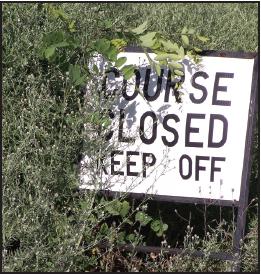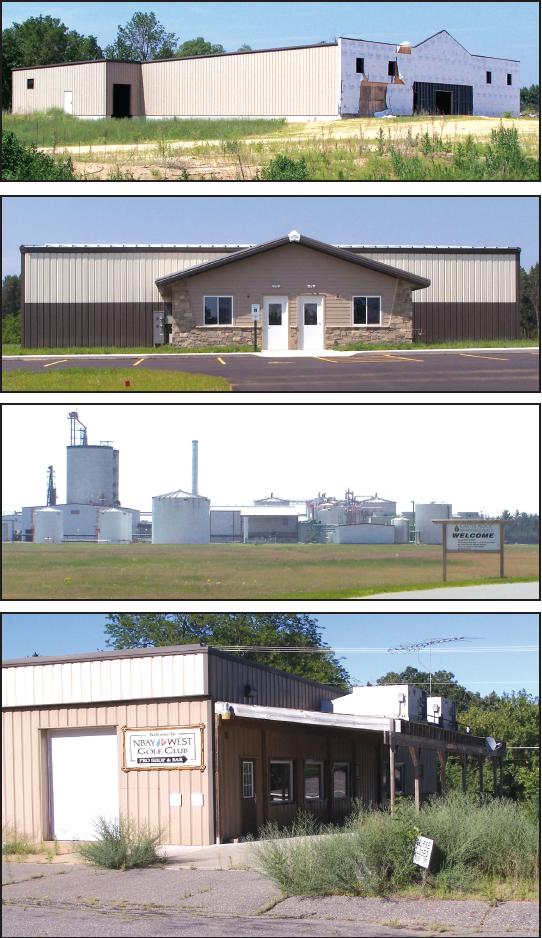Necedah, WI Nationwide, state, federal and local governments are spending billions of dollars in the name of economic development. Doubtless I could have chosen many locations to demonstrate the points I intend to make, but I chose one locality to demonstrate the possible foibles of economic development for two reasons: first, Necedah is close, only 15 miles from where I live; and second, you would probably have to search far and wide for as many examples of what is wrong with this mindset as can be demonstrated here.
Necedah is a former lumber boom village that at the turn of the 20th Century had some 5,000 residents. After the depletion of local pineries, population dwindled to about one tenth that at its low point. Current population is estimated at 887 people, up about 100 from a decade ago. The surrounding Town of Necedah, which shares a fire department and village/town hall, has approximately 2500 residents. There are a few industrial employers of significance in the immediate area, including Freudenburg -NOK (formerly Farnum) that makes gaskets, Necedah Screw Machine, which makes OEM parts, and Castle Rock Renewable Fuels ethanol plant. In Necedah, and scattered throughout the township are modest locally owned homes, many of them old, and recreational residences from modest to increasingly high end. The nearby area includes the second and fifth largest lakes in Wisconsin, both manmade, Petenwell, and Castle Rock.
Leaders of the Village attempted to take steps to make their little town grow, and provide employment opportunity for locals. The first project on my list was billed in a 2001 article as “a $9-million public/private partnership” in a golf course, with residential lots along the fairways. Despite the developer having a history of trouble with the City of LaCrosse on a development there, the Village of Necedah proceeded, issuing bonds to the tune of $4.9 million to fund infrastructure improvements for the development and one or two smaller projects. The original developer was foreclosed upon, and the county now owns most of it due to non-payment of taxes. The bonds are being paid in part with the assessments paid by affected property owners, and with the income from Tax Increment Districts, or TIDs.
The golf course is overrun with weeds and has not operated since 2008, and though a few of the residential lots have been sold, not one is built upon. The balance on the bonds is over $3 million, and it is likely that the term of the TIFs will be extended, and possibly the bonds renegotiated, according to Roger Herried, who has been the Village Administrator since 2003.
Residents of Necedah have long wanted a grocery store. At least two studies have pointed to the feasibility of a medium sized store in the Village of Necedah. The Village started acquiring property to that end about 15 years ago, and a local owner expressed an interest in building, and an agreement was struck in 2007. Between the investment in sewer and water (about $40,000), street improvements and runoff retention, and property acquisition, about $300-350,000 in total was spent, most of it coming in the form of grants from other levels of government. The property was sold to the developer for $1, with a buy back provision if the store were not built. The site excavated, and shell of the building is up, but construction came to a halt in 2008, because the developer did not secure permanent financing. Now with the economic changes that occurred since he started, lenders have became skittish and it is not clear if or when permanent financing may be obtained. The Village could exercise the buy back provision, but the locals are still hopeful the project will be completed.
The finishing touches are now being put on a Village owned “business incubator” building in the Necedah industrial park. The 4000 square foot shop with attached 768 square feet of office space cost about $212,000, paid for with a federal grant of $198,000 and the proceeds of an insurance settlement from a collapsed municipal building. The village started construction without a tenant in mind, and to date, no lease has been signed, although there are currently three prospects. Mr. Herreid assures that they will be screened more thoroughly for financial soundness of their business plans than the grocery store developer was.
Just outside of the Village, in the Town of Necedah is Castle Rock Renewable Fuels (CRRF) ethanol plant. It cost about $38 Million, employs about 35 people, and produces about 50 million gallons of ethanol per year. Juneau County donated $50,000 to help start the construction process, and the project was financed in part by the Town of Necedah, which created a Development authority and sold $12 million in Subordinate Exempt Facility Revenue Bonds to help raise the needed capital. Water is provided by the Village of Necedah, which built a water tower with a grant from the Federal Economic Development Administration at a cost of about $550,000. Forty to 50 percent of the Village’s water goes to CRRF. If the plant produces to its stated capacity, it will receive roughly $27 million annually in ethanol subsidies from the State of Wisconsin and the Federal Government.
Those are the facts, but what are the lessons to be learned here? First, subsidized businesses do not necessarily succeed. While I do not have at my disposal the percentages of successes and failures between subsidized and unsubsidized businesses success rates, I suspect subsidized businesses fail at higher rates than those that are not.
Moreover, let us give thought to where the money comes from. Government has nothing to offer but what it has taken for someone else. So those who are taxed to provide the government largesse have less to save, invest, and spend than they might otherwise. Clearly, when governments participate, it skews the economy in POLITICALLY favored directions, at the expense of economic considerations. Almost by definition, if a business needs a subsidy to survive, it is NOT an economic enterprise. To argue that ethanol should be subsidized so it can compete with petroleum products is also a non-starter in my book. To the extent that there is merit in these claims, do two wrongs make a right? Far better to end ALL business subsidies, so that the market can better calculate true costs, and consumer prices reflect them. To do otherwise is to make the market LESS efficient, and to squanders wealth, making us all poorer, and in fact COSTING us jobs in the name of creating them.
Even when the subsidy takes the form of a tax break, these tax breaks mean that those who do not get similar relief are paying relatively more than those who do. Quite often we see that tax breaks are given to high tech and other industries where wages are higher than in less technical endeavors. So relatively high income businesses get tax breaks and subsidies, and those earning less are taxed to subsidize them. We even have some businesses taxed in order that their competitors may be subsidized. In my interview with Mr. Herreid, he revealed that other local businesses also obtained grants- or as I prefer to call them, subsidies. So apparently, in almost a literal sense, we get the government to pick each others’ pockets so we can get subsidies so we can stay in business and be successful, because taxes are too high and /or government regulations create a market making survival more difficult. Does this not appear to be a futile, circular effort? Does it not occur to people that most of us would be better off keeping more of what we earned so taxes could be less and most of us more profitable? Is the current system fair? Does it even make economic sense? Does it really improve the economic climate to pursue these policies? Consider also that government money comes with strings attached that drive prices higher. These costs include higher administrative costs, due to more paperwork; cost of money as contractors are often 60 days or more out on their money when they do government work or work that is paid for with government funds; and often requirements to pay higher wages to workers than would otherwise be needed to do the job. The more the state and federal government are involved, the higher such costs will be.
What is clear to me from an empirical perspective is that far more businesses were created when governments were smaller, the markets freer, and the government did less to subsidize business than it does today. Despite the growth of the “economic development” fraternity, economic growth is today slower than at any other time in our history, save the Great Depression. And the mere existence of this fraternity creates the real prospect of favoritism, a “good old boy” network, and corruption. In fact some of us believe that the entire process of using the force of government to redistribute wealth, even when nominally working to expand it, is corrupt.
Moreover, the more time and money businesses spend on pursuing these special favors, the less time and money they have to produce goods and services. The more “services” the governments provide, whether for economic development or for other purposes, the higher taxes, and prices must be, either now or in the future. Clearly these handouts are a good part of the reason that both the state of WI and the federal government are in the terrible economic shape they are in now.
The best arguments I have heard in favor of the status quo is the claim that “if we do not take that money someone else will.“ So businesses that would prefer NOT to participate have economic incentives that may be at odds with the political/economic philosophy of both owners as well as many if not most taxpayers. To those arguments, I have answered, “OK, grab the money with both hands, but lobby your representatives to put an end to these practices. But know also that supporting these giveaway policies is contributing to both our current and future economic problems.” Most often the political class hears the first part of the message, but not the rest. Clearly, we are killing the proverbial Golden Goose. Who will get the last “egg” before our greed has drained it of life?

